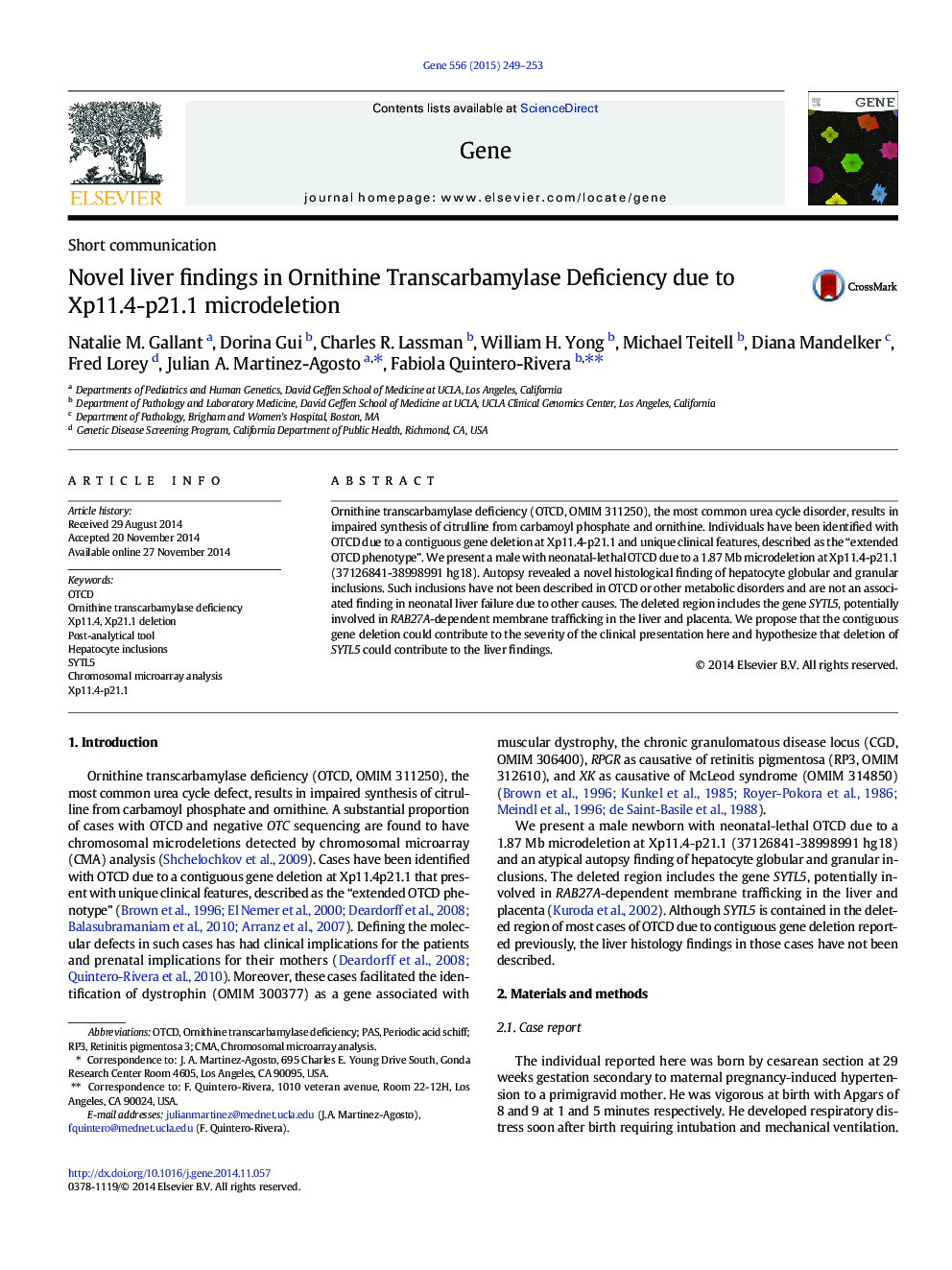| Article ID | Journal | Published Year | Pages | File Type |
|---|---|---|---|---|
| 5905630 | Gene | 2015 | 5 Pages |
Ornithine transcarbamylase deficiency (OTCD, OMIM 311250), the most common urea cycle disorder, results in impaired synthesis of citrulline from carbamoyl phosphate and ornithine. Individuals have been identified with OTCD due to a contiguous gene deletion at Xp11.4-p21.1 and unique clinical features, described as the “extended OTCD phenotype”. We present a male with neonatal-lethal OTCD due to a 1.87Â Mb microdeletion at Xp11.4-p21.1 (37126841-38998991 hg18). Autopsy revealed a novel histological finding of hepatocyte globular and granular inclusions. Such inclusions have not been described in OTCD or other metabolic disorders and are not an associated finding in neonatal liver failure due to other causes. The deleted region includes the gene SYTL5, potentially involved in RAB27A-dependent membrane trafficking in the liver and placenta. We propose that the contiguous gene deletion could contribute to the severity of the clinical presentation here and hypothesize that deletion of SYTL5 could contribute to the liver findings.
